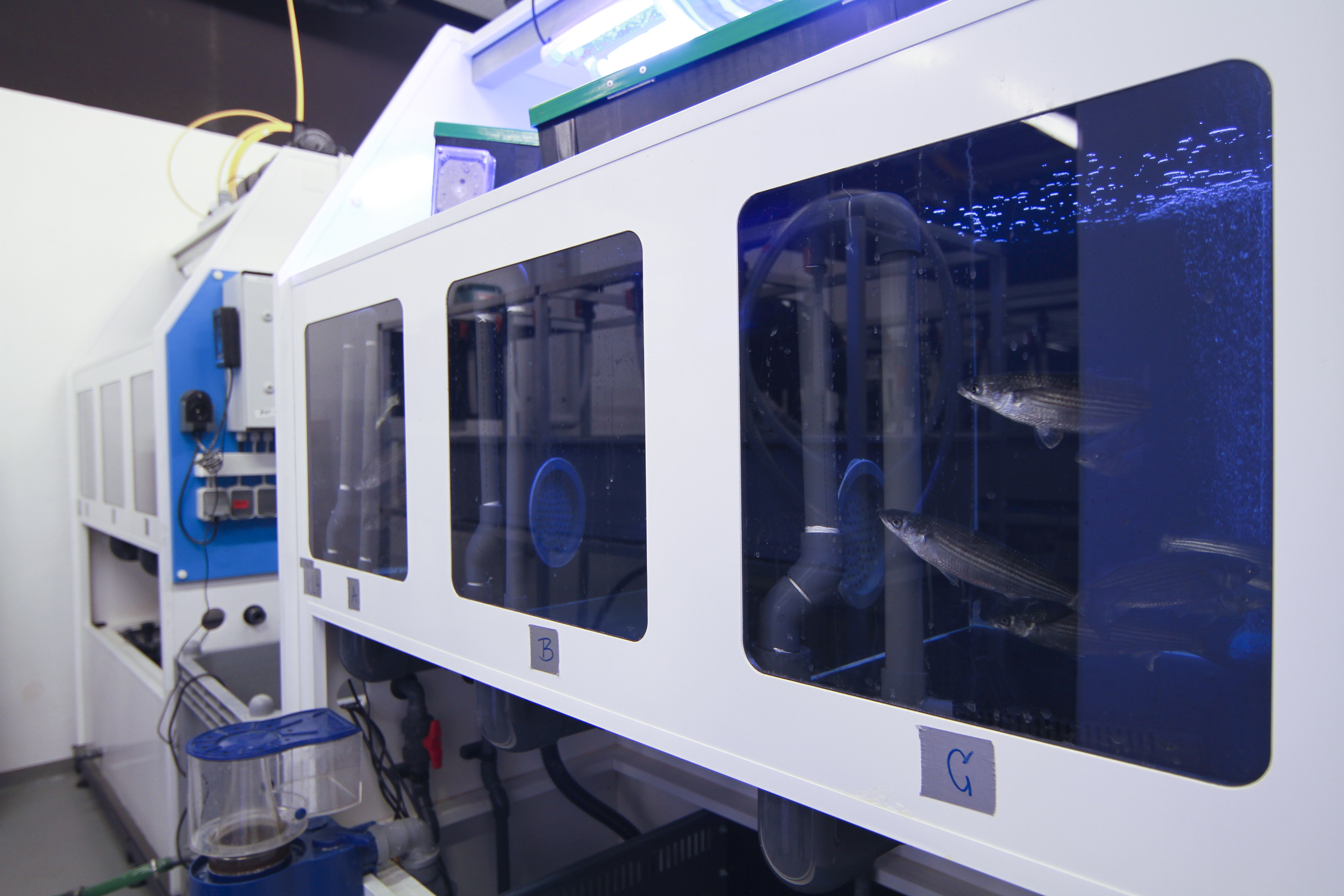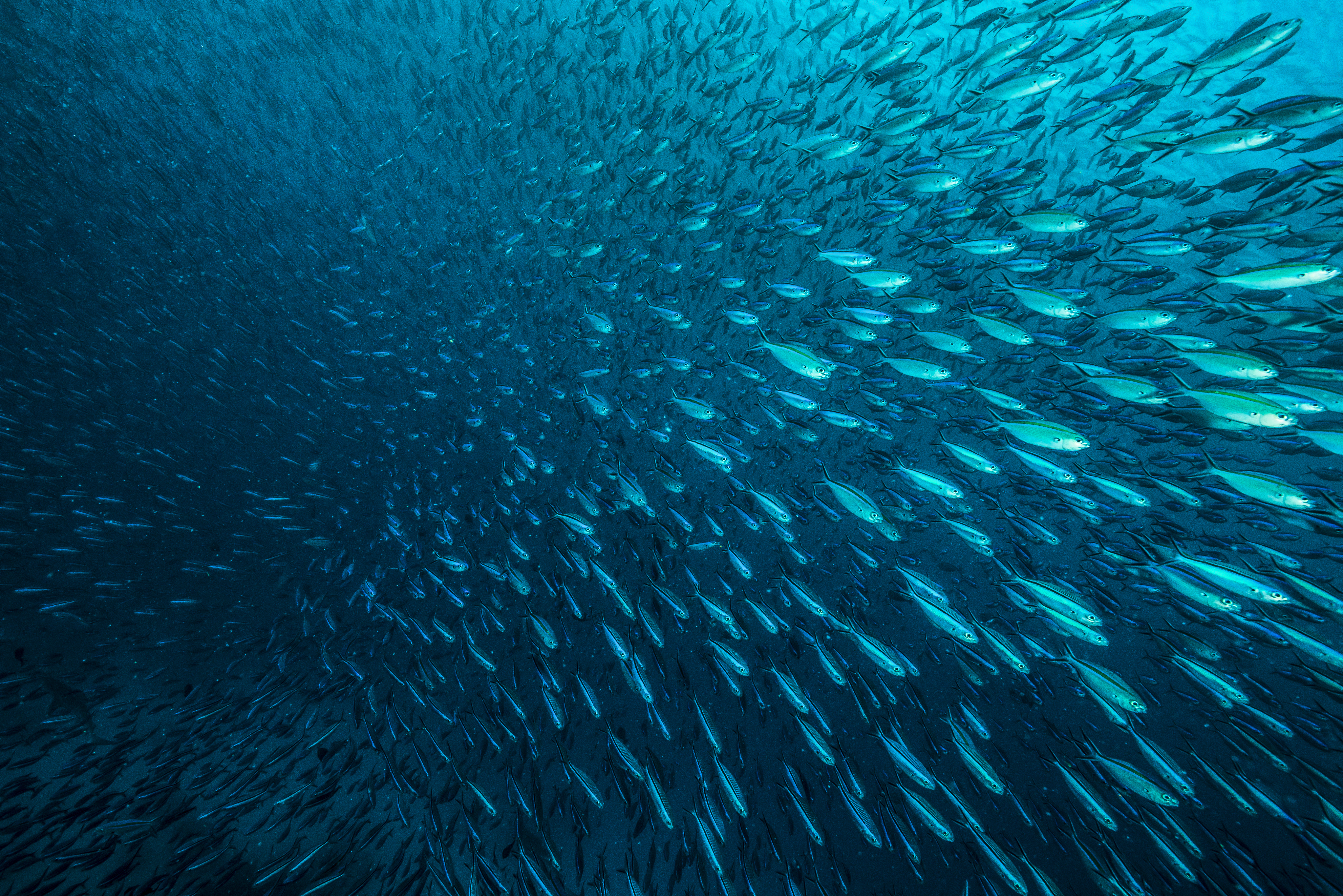Workspace

Through research & development on and in our experimental aquaculture systems, we contribute to technological progress in the field of aquaculture farming systems. In doing so, we develop new utilisation concepts for already established systems such as land-based integrated multitrophic aquaculture (IMTA) systems.
In IMTA concepts, the nutrients used in feeding the fish are used multiple times in the form of fish feed. Although there is no more nutrient-efficient way to produce animal protein than aquaculture (excluding insects), fish can only convert less than half of the nutrients contained in fish feed into biomass. The rest (particulate and dissolved nutrients) ends up in the water and can, however, be utilised by invertebrates and eventually by plants or algae to produce further valuable biomass. Therefore, IMTA has very great potential in the field of bioeconomy and circular economy.
Other focal points are the development of innovative technological solutions in the field of water treatment, fish keeping and monitoring.
